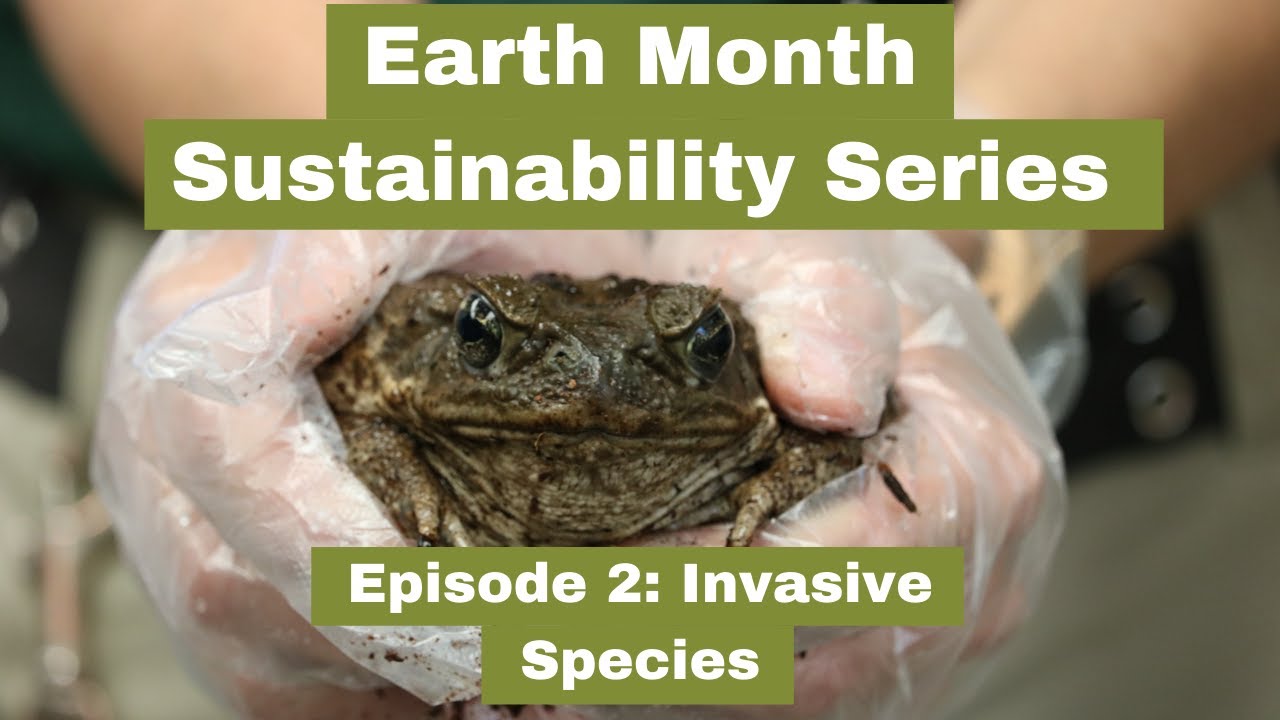Episode 2: Invasive Species and Welcome Back to the Earth Month Sustainability Series! Today, we dive into the fascinating and often overlooked topic of invasive species. These species, whether animals or plants have the power to cause significant harm in environments where they are not native. Join us as we explore some common invasive species and learn how we can all contribute to preventing their spread. Remember that if you’re an educator or watching with learners, you can participate in the Earth Month Sustainability Challenge and even win a free virtual animal encounter! So let’s jump right in and discover the wonders and dangers of invasive species.
1. The Definition and Impact of Invasive Species
– Invasive species are any plants or animals that are non-native to an ecosystem and cause harm to the environment, economy, or human health.
– They can outcompete native species for resources such as food, water, and shelter, leading to decreased biodiversity.
– Invasive species can disrupt entire ecosystems, affecting everything from pollinators to top predators.
2. Common Invasive Species: Glimpse into the Intruders
– Asian Carp: Originally brought to the United States for aquaculture, these fish quickly spread through waterways, outcompeting native species and causing ecological imbalances.
– Cane Toads: Introduced to control pests, these toads have become a nuisance in Australia, poisoning native predators and disrupting ecosystems.
– Kudzu: Known as “the vine that ate the South,” Kudzu proliferates, smothering native plants and altering landscapes.
3. The Pathways of Invasion: How Do They Spread?
– Ballast Water: Ships often carry invasive species in their ballast water, which is then discharged in new locations.
– Pet Trade: Exotic pets, when released into the wild, can become invasive species that disrupt native ecosystems.
– Horticulture: Plants used in landscaping and gardening can escape cultivation, spreading and negatively impacting natural habitats.
4. Preventing the Spread: Everyone’s Responsibility
– Be Informed: Learn about invasive species in your area and the potential harm they can cause.
– Report Sightings: If you encounter an invasive species, report it to local authorities or organizations dedicated to managing it.
– Choose Native: Select native plants for your garden, as they are better adapted to your area’s ecosystem and less likely to become invasive.
5. Take Action: Engaging in Conservation Efforts
– Volunteer: Participate in local conservation projects focusing on invasive species management, such as removing invasive plants or monitoring populations.
– Dispose Responsibly: Don’t release unwanted pets into the wild; find responsible alternatives, such as surrendering them to a rescue organization.
– Support Legislation: Support policies and laws that regulate the trade of potentially invasive species and promote responsible pet ownership.
In conclusion, the threat of invasive species cannot be underestimated. These intruders can disrupt ecosystems, leading to the loss of native species, economic damage, and even human health risks. By understanding the impact of invasive species and taking action to prevent their spread, we can help protect the biodiversity and balance of our natural world. Remember, every small action counts, so let’s join together to fight against invasive species and ensure a sustainable future for all. Together, we can make a significant difference.
*****
Source Description
Welcome back to the Earth Month Sustainability Series for episode 2! Today’s episode is on the dangers of invasive species. An invasive species is any species, plant or animal, that causes harm in an environment that is not native. Today we’ll introduce some common invasive species and ways you can help prevent the spread of invasives. Suppose you are an educator or are watching with learners. In that case, you can buy research activities for every episode of the series, plus eligibility to enter the Earth Month Sustainability Challenge to win a free virtual animal encounter! All activities plus eligibility for the challenge costs just $10! Register at https://brandywinezoo.org/learn/zoo-school/#special_events


